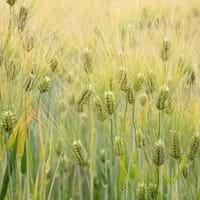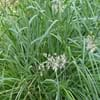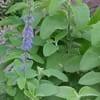Life Span
Annual
Perennial
Origin
North America, South America, Europe, Southern Africa, Asia
China
Types
Hulled Barley, Hulless Barley, Barley Grits
Greenstripe Vivax, Moso, Weavers Bamboo, Oldhamii
Habitat
Humid climates
Subtropical climates, Wet Woods
USDA Hardiness Zone
Not Available
8-11
AHS Heat Zone
Not Available
12 - 8
Sunset Zone
Not Available
H1, H2, 8, 9, 14, 15, 16, 17, 18, 19, 20, 21, 22, 23, 24
Habit
Not Available
Upright/Erect
Minimum Height
Not Available
Minimum Width
Not Available
Flower Color
Not Available
Not Available
Flower Color Modifier
Bicolor
Bicolor
Fruit Color
Brown, Gold
Not Available
Leaf Color in Spring
Green, Light Green, Blue Green, Gray Green
Dark Green
Leaf Color in Summer
Light Green
Light Green
Leaf Color in Fall
Not Available
Dark Green
Leaf Color in Winter
Not Available
Dark Green
Leaf Shape
Grass like
Acicular
Plant Season
Not Available
Spring, Summer, Fall, Winter
Sunlight
Full Sun
Full Sun, Partial Sun
Type of Soil
Loam, Sand
Clay, Loam, Sand
The pH of Soil
Not Available
Acidic, Neutral, Alkaline
Soil Drainage
Well drained
Average
Bloom Time
Spring, Summer
Not Available
Tolerances
Drought
Drought
Where to Plant?
Ground
Container, Ground
How to Plant?
Seedlings
Grafting, Seedlings, Stem Planting, Transplanting
Plant Maintenance
Medium
Medium
Watering Requirements
Requires watering in the growing season
Needs watering once a week, Use Mulches to help prevent water loss during hot and windy weather, Water Deeply
In Summer
Lots of watering
Lots of watering
In Spring
Moderate
Moderate
In Winter
Average Water
Average Water
Soil pH
Not Available
Acidic, Neutral, Alkaline
Soil Type
Loam, Sand
Clay, Loam, Sand
Soil Drainage Capacity
Well drained
Average
Sun Exposure
Full Sun
Full Sun, Partial Sun
Pruning
Do not prune during shooting season
Do not prune during shooting season, Prune in late summer or fall, Remove damaged leaves
Fertilizers
All-Purpose Liquid Fertilizer
All-Purpose Liquid Fertilizer
Pests and Diseases
Red blotch
Black sooty mold, Mealybugs, Mosaic viruses, Powdery mildew, pythogens, Stem rot
Plant Tolerance
Drought
Drought
Flowers
Not Available
None
Flower Petal Number
Single
Single
Edible Fruit
Not Available
No
Foliage Texture
Fine
Coarse
Foliage Sheen
Matte
Matte
Attracts
Not Available
Deers, Rabbits, Rats, Squirrels
Allergy
Abdominal pain, breathing problems, Eczema, Headache, Itchiness, Red eyes, Runny nose, Sinuses, sneezing, Sore eyes, Watery eyes, wheezing
allergic conjunctivitis, Asthma, Inflammation, Throat itching
Aesthetic Uses
Not Used For Aesthetic Purpose
Showy Purposes
Beauty Benefits
Not Available
Not Available
Environmental Uses
Air purification
Agroforestry, Air purification, No fertilizer, pesticides, or herbicides needed
Medicinal Uses
Asthma, Bronchitis, Diabetes, Diarrhea
Clears heat, Cold, fidgeting, Treating fever, Urinary tract problems
Part of Plant Used
Seeds
Leaves, Stem
Other Uses
Used As Food, Used in making beverages
Application in Handicrafts, Showy Purposes, Used As Food, Used in Furniture, Used in paper industry
Used As Indoor Plant
No
No
Used As Outdoor Plant
Yes
Yes
Garden Design
Cutflower, Dried Flower/Everlasting, Edible, Wildflower
Feature Plant, Screening / Wind Break, Tropical
Botanical Name
HORDEUM vulgare
BAMBUSA oldhamii
Common Name
Barley
Clumping Bamboo, Giant Timber Bamboo, Oldham's Bamboo
In Portuguese
cevada
bambu
In Polish
jęczmień
Bambus
Phylum
Magnoliophyta
Magnoliophyta
Class
Liliopsida
Liliopsida
Clade
Angiosperms, Commelinids, Monocots
Not Available
Tribe
Triticeae
Bambuseae
Subfamily
Pooideae
Not Available
Number of Species
Not Available
Not Available
Properties of Barley and Giant Timber Bamboo
Wondering what are the properties of Barley and Giant Timber Bamboo? We provide you with everything About Barley and Giant Timber Bamboo. Barley doesn't have thorns and Giant Timber Bamboo doesn't have thorns. Also Barley does not have fragrant flowers. Barley has allergic reactions like Abdominal pain, breathing problems, Eczema, Headache, Itchiness, Red eyes, Runny nose, Sinuses, sneezing, Sore eyes, Watery eyes and wheezing and Giant Timber Bamboo has allergic reactions like Abdominal pain, breathing problems, Eczema, Headache, Itchiness, Red eyes, Runny nose, Sinuses, sneezing, Sore eyes, Watery eyes and wheezing. Compare all the properties and characteristics of these two plants. Find out which of these plant can be used as indoor plant. If you are interested to decorate your house and garden, find out aesthetic uses, compare them and select the plant which will beautify your surrounding. Along with beautification, try comparing medicinal and edible uses of Barley and Giant Timber Bamboo and you can choose the plant having best and most benefits.
Season and Care of Barley and Giant Timber Bamboo
Season and care of Barley and Giant Timber Bamboo is important to know. While considering everything about Barley and Giant Timber Bamboo Care, growing season is an essential factor. Barley season is Not Available and Giant Timber Bamboo season is Not Available. The type of soil for Barley is Loam, Sand and for Giant Timber Bamboo is Clay, Loam, Sand while the PH of soil for Barley is Not Available and for Giant Timber Bamboo is Acidic, Neutral, Alkaline.
Barley and Giant Timber Bamboo Physical Information
Barley and Giant Timber Bamboo physical information is very important for comparison. Barley height is Not Available and width Not Available whereas Giant Timber Bamboo height is 1,000.00 cm and width 10.00 cm. The color specification of Barley and Giant Timber Bamboo are as follows:
Barley flower color: Not Available
Barley leaf color: Green, Light Green, Blue Green and Gray Green
Giant Timber Bamboo flower color: Not Available
- Giant Timber Bamboo leaf color: Dark Green
Care of Barley and Giant Timber Bamboo
Care of Barley and Giant Timber Bamboo include pruning, fertilizers, watering etc. Barley pruning is done Do not prune during shooting season and Giant Timber Bamboo pruning is done Do not prune during shooting season, Prune in late summer or fall and Remove damaged leaves. In summer Barley needs Lots of watering and in winter, it needs Average Water. Whereas, in summer Giant Timber Bamboo needs Lots of watering and in winter, it needs Average Water.





